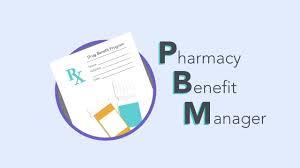Pharmacy Benefit Manager Market Pricing Strategies

The pharmacy benefit manager market employs diverse pricing strategies to balance cost containment, competitive advantage, and patient access to medications. These strategies enable PBMs to negotiate drug prices effectively, optimize formulary placement, and manage rebates, ultimately influencing healthcare affordability and payer savings.
Negotiated Discounts and Rebates
One of the primary pricing strategies involves negotiating discounts and rebates with pharmaceutical manufacturers. PBMs use their large client base to secure volume-based price reductions and rebate agreements tied to drug utilization. These rebates often help offset costs for payers and reduce overall drug expenditure.
Formulary Management and Tiered Pricing
PBMs develop formularies—lists of covered medications categorized into tiers based on cost and efficacy. Tiered pricing encourages the use of preferred drugs, such as generics or biosimilars, by offering lower copayments, thus steering patients and providers toward cost-effective options. This strategy balances affordability with therapeutic outcomes.
Reference Pricing
Reference pricing sets a standard reimbursement level for groups of therapeutically similar drugs. PBMs may implement this strategy to encourage the selection of lower-cost medications within a category, motivating manufacturers to compete on price and helping payers control pharmacy spending.
Cost-Plus Pricing Models
Some PBMs are adopting transparent cost-plus pricing models, charging a fixed fee above the actual drug acquisition cost instead of relying heavily on rebates. This approach enhances pricing transparency and aligns incentives between PBMs, payers, and patients, though it may affect traditional revenue streams.
Pass-Through Pricing
In pass-through pricing, PBMs pass the actual cost of drugs directly to payers with a clearly defined administrative fee. This strategy promotes openness in pricing structures and is increasingly preferred by payers seeking to understand true drug costs.
Specialty Drug Pricing Strategies
Given the high cost of specialty medications, PBMs employ specialized pricing tactics such as carve-outs, where specialty drugs are managed separately from traditional formularies, enabling tailored pricing and distribution agreements. This helps manage the growing financial impact of specialty pharmaceuticals.
Value-Based Contracting
Value-based pricing ties drug reimbursement to clinical outcomes rather than volume. PBMs negotiate agreements where payment is contingent on a medication’s effectiveness, aligning costs with patient benefits and promoting the use of high-value therapies.
Patient Cost-Sharing Optimization
PBMs design cost-sharing structures to balance affordability and adherence. By adjusting copayments, coinsurance, and deductibles, PBMs incentivize the use of lower-cost drugs while ensuring patients can access necessary therapies without undue financial burden.
Dynamic Pricing Adjustments
PBMs continuously monitor market trends, competitive pricing, and utilization data to adjust pricing strategies dynamically. This agility allows PBMs to respond to drug launches, patent expirations, and regulatory changes to optimize cost savings and access.
Conclusion
Pharmacy benefit managers employ multifaceted pricing strategies, including negotiated rebates, tiered formularies, transparent pricing models, and value-based contracts, to control drug costs while maintaining patient access and quality care. These strategies are crucial for managing the economic challenges in today’s complex pharmaceutical landscape.
- AI
- Vitamins
- Health
- Admin/office jobs
- News
- Art
- Causes
- Crafts
- Dance
- Drinks
- Film
- Fitness
- Food
- Spiele
- Gardening
- Health
- Startseite
- Literature
- Music
- Networking
- Andere
- Party
- Religion
- Shopping
- Sports
- Theater
- Wellness


